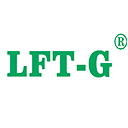(1) حيدة
يشير الأصل إلى ألياف مفردة متواصلة يتم غزلها بواسطة مغزال ذو فتحة واحدة، ولكن في التطبيقات العملية، غالبًا ما يشتمل على خيوط ذات فتحات قليلة مكونة من 3 ~ 6 ألياف مفردة مغزولة بواسطة مغزال 3 ~ 6 فتحات. تسمى الشعيرات الأحادية المصنوعة من الألياف الاصطناعية الخشنة (قطرها 0.08 ~ 2 مم) بالشعيرات، وتستخدم لصنع الحبال أو الفرشاة أو الأكياس الشبكية اليومية أو شباك الصيد أو قماش الترشيح الصناعي؛ يتم استخدام الخيط الأحادي المصنوع من مادة البولي أميد في صناعة الجوارب النسائية الشفافة أو غيرها من الملابس المحبوكة الفاخرة.
(2) الحرير المركب
خيوط تتكون من عشرات الألياف المفردة. تتكون الألياف المعقدة من الألياف الكيماوية بشكل عام من 8 إلى 100 ألياف مفردة. الغالبية العظمى من الأقمشة مصنوعة من الحرير المركب. وذلك لأن الحرير المركب المكون من عدة ألياف مفردة يكون أكثر توافقًا من الحرير الواحد الذي له نفس القطر.
(3) سلك ستارة
شريط حريري يتكون من أكثر من مائة إلى عدة مئات من الألياف المفردة المستخدمة في تصنيع نسيج حبل الإطارات، والمعروف باسم سلك الحبل.
يتم قطع منتج الألياف الكيماوية إلى عدة سنتيمترات إلى عشرة سنتيمترات في الطول، ويسمى هذا الطول من الألياف بالألياف الأساسية. وفقًا لطول القطع المختلف، يمكن تقسيم الألياف الأساسية إلى ألياف القطن الأساسية، وألياف الصوف الأساسية، والألياف الأساسية متوسطة الطول.
(1) ألياف قطنية قصيرة
الطول 25 ~ 38 مم، الألياف جيدة (الكثافة الخطية 1.3 ~ 1.7dtex)، تشبه ألياف القطن، وتستخدم بشكل أساسي للمزج مع ألياف القطن، مثل ألياف البوليستر الأساسية من نوع القطن ومزيج ألياف القطن، النسيج الناتج ويسمى نسيج "البولي قطن".
(2) ألياف الشعر الأساسية
الطول 70 ~ 150 مم، الألياف الخشنة (الكثافة الخطية 3.3 ~ 7.7dtex)، تشبه الصوف، وتستخدم بشكل أساسي للمزج مع الصوف، مثل ألياف البوليستر الأساسية من نوع الصوف ومزج الصوف، ويسمى النسيج الناتج "الصوف" نسيج بوليستر.
(3) ألياف متوسطة الطول
الطول 51 ~ 76 مم، سمك الألياف بين نوع القطن ونوع الصوف (كثافة الخط 2.2 ~ 3.3dtex)، يستخدم بشكل أساسي لنسج أقمشة الألياف المتوسطة والطويلة.
يمكن مزج الألياف الأساسية مع الألياف الطبيعية وكذلك الألياف الكيميائية الأخرى، وبالتالي فإن الأقمشة المخلوطة لها خصائص شاملة جيدة. بالإضافة إلى ذلك، يمكن أيضًا أن تكون الألياف القصيرة عبارة عن غزل خالص. في إنتاج الألياف الكيماوية في جميع أنحاء العالم، يكون إنتاج الألياف الأساسية أعلى من إنتاج الألياف الفتيلية. وفقا لخصائص الألياف، بعض الأصناف (مثل النايلون) لإنتاج خيوط؛ بعض الأصناف (مثل ألياف الأكريليك) تنتج بشكل أساسي أليافًا قصيرة؛ وبعض الأصناف، مثل البوليستر، لها نسبة مماثلة.
يمكن للقسم الخشن من الحرير الخشن ذو القوة المنخفضة، واستطالة الكسر الكبيرة، والانكماش الحراري القوي، والصباغة الجيدة، ومعالجة تقليل القلويات السهلة، الاستفادة الكاملة من هذه الخصائص لتطوير خصائص النسيج الفريدة. ترتبط الخصائص الفيزيائية للحرير الخشن بنسبة قطر التفاصيل الخشنة وعوامل أخرى. تتميز الخيوط العامة ذات التفاصيل الخشنة باستطالة أعلى عند الكسر وانكماش الماء المغلي وانخفاض قوة الكسر والإنتاجية. يمكن لخاصية الانكماش القوية أن تجعل ألياف التفاصيل الخشنة ممزوجة بألياف أخرى لتكوين ألياف مختلطة غير متجانسة. بالإضافة إلى ذلك، من السهل تشويه الجزء الخشن من الحرير الخشن، ويجب الانتباه إلى مشاكل القوة المنخفضة في عملية النسيج والصباغة والتشطيب. الحرير الخشن الأولي هو حرير مستدير. مع تطور تكنولوجيا إنتاج الحرير الخشن التفاصيل، ظهرت بعض الحرير الخاص التفاصيل الخشنة على التوالي، مثل الحرير الخشن ذو الشكل الخاص، والحرير الخشن ذو الألياف المختلطة، والحرير الخشن المسامي الصغير والحرير الخشن الناعم، وما إلى ذلك فهي إما تتمتع بملمس وأسلوب خاصين، أو تتمتع بامتصاص خاص، وتستخدم في الغالب في تطوير الأقمشة عالية الجودة.
تشير الكلمة المستعارة لصيانة الألياف الكيميائية التفاضلية، والتي نشأت من اليابان، بشكل عام إلى الألياف الكيميائية الأصلية استنادًا إلى التشوه الفيزيائي أو التعديل الكيميائي لمادة الألياف، ومن الواضح أنها تختلف عن الألياف الكيميائية العادية في المظهر أو الجودة الداخلية. لا تعمل الألياف التفاضلية على تحسين أداء ونمط الألياف الكيميائية فحسب، بل تمنح الألياف الكيميائية أيضًا وظائف وخصائص جديدة، مثل امتصاص الماء العالي، والتوصيل الكهربائي، والانكماش العالي والصباغة. نظرًا لأن الألياف التفاضلية تستخدم بشكل أساسي لتحسين تأثير المحاكاة والراحة والحماية، فهي تستخدم بشكل أساسي لتطوير المنسوجات مثل الصوف والكتان والحرير، ويستخدم بعضها أيضًا لتطوير المنسوجات المزخرفة والمنسوجات الصناعية. 98
هناك نوعان أو أكثر من البوليمرات التي لا تختلط على المقطع العرضي للألياف. تسمى هذه الألياف الكيميائية بالألياف المركبة، أو الألياف ثنائية المكونات. نظرًا لأن المكونين أو أكثر الموجودين في الألياف يكملان بعضهما البعض، فإن أداء الألياف المركبة عادة ما يكون أفضل من أداء الألياف الاصطناعية التقليدية، ولها العديد من الاستخدامات.
هناك أنواع عديدة من الألياف المركبة، والتي يمكن تقسيمها إلى فئتين حسب شكلها، وهما النوع مزدوج الطبقة والنوع متعدد الطبقات. يتضمن النوع المزدوج الطبقة النوع المتوازي ونوع الجلد الأساسي، والنوع متعدد الطبقات يتضمن النوع متعدد الطبقات المتوازي والنوع الشعاعي والنوع متعدد النواة ونوع الحبوب الخشبية والنوع المدمج ونوع جزيرة البحر والنوع المقسم.
نظرًا لأن سمك الألياف المفردة له تأثير كبير على أداء النسيج، يمكن أيضًا تصنيف الألياف الكيميائية وفقًا لسمك الألياف المفردة (الكثافة الخطية)، وتنقسم بشكل عام إلى ألياف تقليدية، وألياف دقيقة، وألياف دقيقة والألياف الناعمة جداً.
ظهرت المواد الاصطناعية الجديدة في اليابان في أواخر الثمانينيات، وأصبحت شائعة في جميع أنحاء العالم بأساليب وأنسجة خارقة للطبيعة جديدة وفريدة من نوعها، مثل الجلد الخوخي ومقابض البودرة فائقة الدقة. الألياف الاصطناعية الجديدة من البلمرة والغزل والنسيج والصباغة والتشطيب والخياطة وغيرها من الخطوات تعتمد تعديلًا جديدًا وتكنولوجيا مركبة، وهي نوع من الألياف الطبيعية والألياف الاصطناعية لا يمكن مقارنتها بمواد الألياف الجديدة السابقة. وفقا لشكلها السلعي، فإن الألياف المركبة الجديدة تشتمل بشكل رئيسي على النوع الرقيق للغاية، والنوع فائق الثني، والنوع فائق النعومة. وفقًا لملمسها، يمكن تقسيمها إلى ملمس حريري، وملمس جلد الخوخ، وملمس مسحوق ناعم للغاية وملمس صوف جديد.
